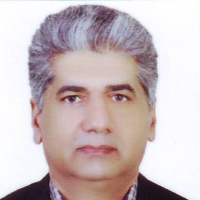Qaravolkhaneh in the plain of Mashhad: a station along the ancient road from Central Asia to the plateau of Iran.
Author(s):
Article Type:
Research/Original Article (دارای رتبه معتبر)
Abstract:
Mashhad plain in northeastern Iran, due to its natural and special location, has been one of the influential routes in trade between Central Asia and the Iranian plateau. Along with the waterless deserts and high mountains of Central Asia, the Mashhad plain has been a good route for caravans to pass through this area, but we have limited archaeological information from this area. The ancient site of Qaravolkhaneh in the east of Mashhad plain is one of the important and key sites in the plain bed, which is located on a high natural hill overlooking Kashfarud, next to the ancient road from Central Asia to the Iranian plateau. The purpose of this research, which is done using library and field studies, is an answer to the question of what settlement periods the cultural findings of the site include and on what basis the site is functionally formed? Findings were collected in a field study by incidental sampling and then studied and compared. In the study of surface findings of this area, four types of pottery and three settlement periods including bronze, Parthian and Sassanid were identified, which somehow indicates the greater connection of Mashhad plain with Central Asian cultures (especially the southeastern regions of Turkmenistan) than the Iranian plateau. Evidence shows that in any period that provided a suitable platform for communication between Central Asia and the Iranian plateau, especially commercially, we see the formation of ancient sites such as castles and caravanserais on this route to provide security.
Keywords:
Language:
Persian
Published:
Journal of Greate Khorasan, Volume:14 Issue: 51, 2023
Pages:
1 to 22
https://magiran.com/p2631872
سامانه نویسندگان
مقالات دیگری از این نویسنده (گان)
-
STUDYING THE ARCHITECTURE OF KERMAN'S ZOROASTRIAN CRYPTS WITH A LOOK AT THE BURIAL RITUAL
Soodeh Lohari *, , Hanie Fathi
Journal of Sistan and Baluchistan Studies, Dec 2024 -
The Role and Function of the Money in the Persepolis Royal Economy
Farahad Miri *,
Iranian Archaeological Research Journal,



